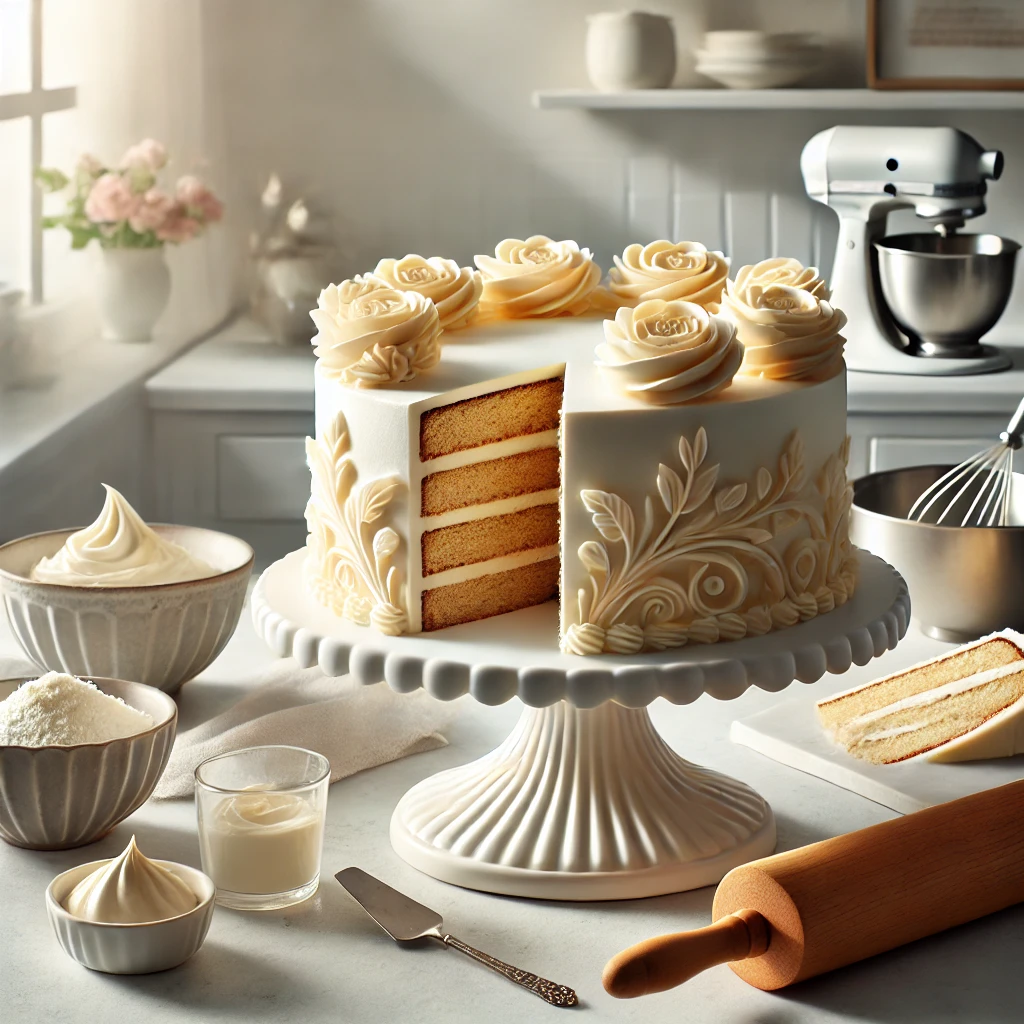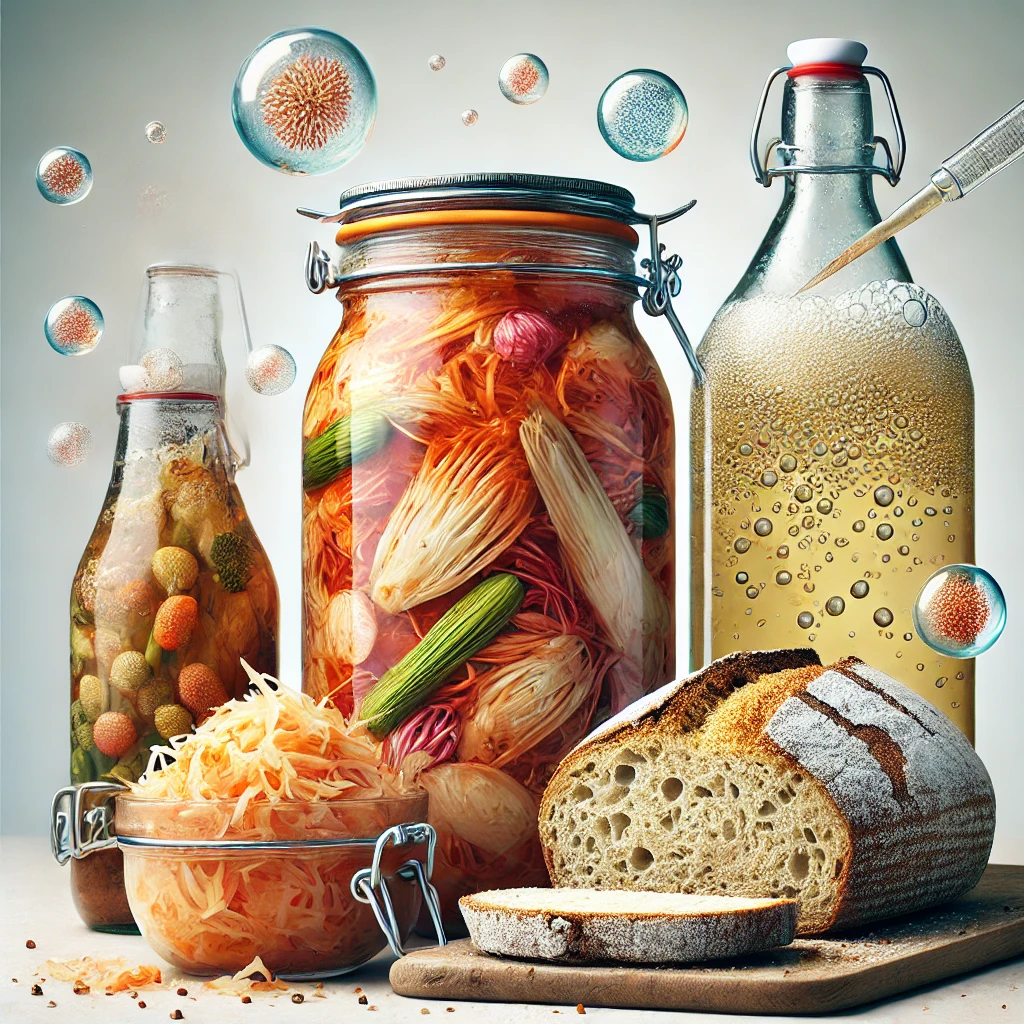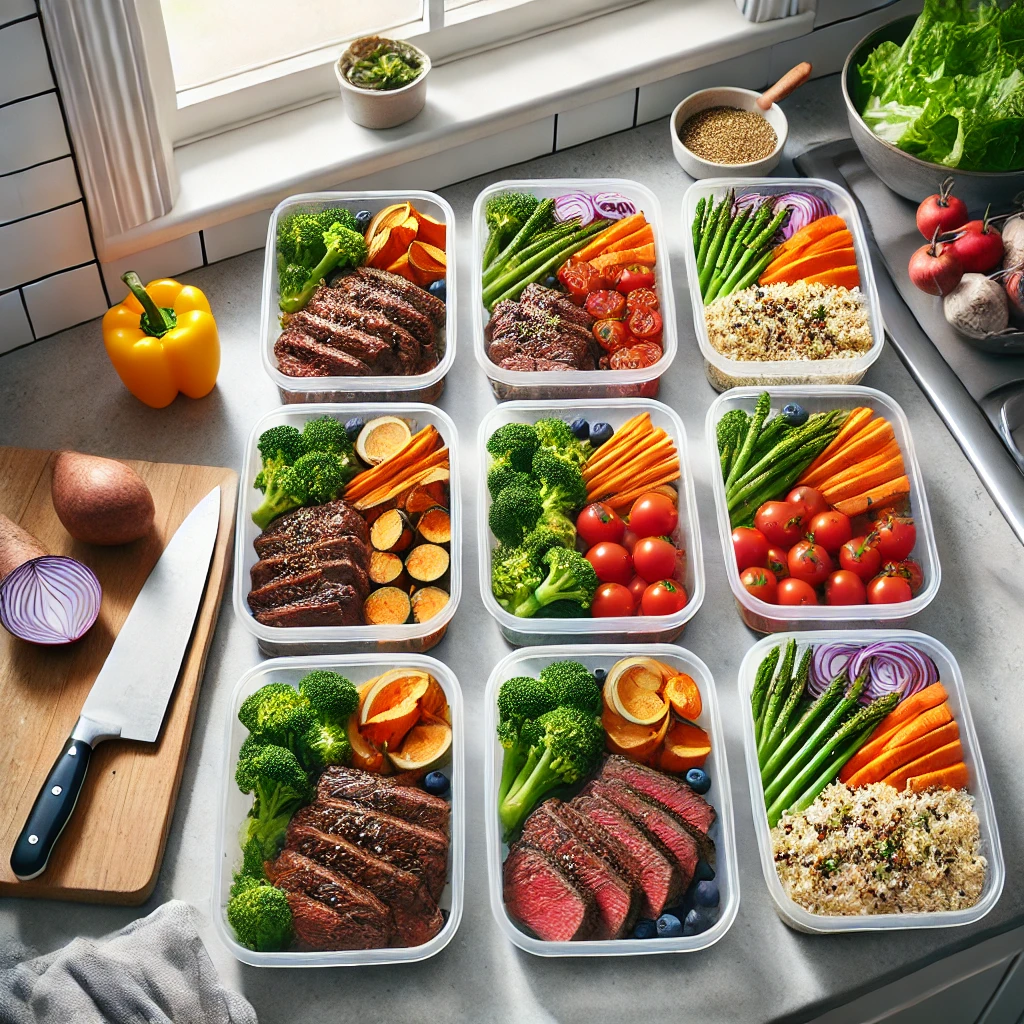Baking a cake is both an art and a science. Whether you’re a beginner or an experienced baker, there’s always something new to learn about the craft of cake baking. From choosing the right ingredients to mastering mixing techniques, every step in the process plays a crucial role in the final result. In this comprehensive guide, we’ll explore the essential tips and techniques for baking cakes that are not only delicious but also beautifully textured and visually appealing. Whether you’re aiming for a simple sponge cake or a show-stopping layer cake, these tips will help you achieve perfect results every time.
Understanding Ingredients
Flour: Flour is the foundation of any cake, providing structure and stability. The type of flour you use can have a significant impact on the texture of your cake:
- All-Purpose Flour: This versatile flour is commonly used in cake recipes. It has a moderate protein content, making it suitable for a wide range of cakes, from sponge cakes to pound cakes.
- Cake Flour: Cake flour is milled from soft wheat and has a lower protein content than all-purpose flour. This results in a finer, lighter crumb, making it ideal for delicate cakes like angel food cake and chiffon cake.
- Self-Rising Flour: Self-rising flour contains a leavening agent (usually baking powder) and salt, eliminating the need to add these ingredients separately. It’s commonly used in recipes for quick breads and certain types of cakes.
Tips for Success:
- Measuring: When measuring flour, use the “spoon and level” method. Spoon the flour into the measuring cup and level it off with a straight edge. This prevents packing the flour, which can result in a dense cake.
- Sifting: Sifting flour before measuring can help aerate it and remove any lumps, resulting in a lighter cake.
Sugar: Sugar not only sweetens the cake but also contributes to its texture and moisture. Different types of sugar can produce different results:
- Granulated Sugar: This is the most commonly used sugar in cake recipes. It dissolves easily and provides a fine, uniform texture.
- Brown Sugar: Brown sugar contains molasses, which adds moisture and a rich, caramel-like flavor to cakes. It’s often used in recipes for carrot cake, gingerbread, and chocolate cakes.
- Confectioners’ Sugar: Also known as powdered sugar, this finely ground sugar is used primarily for icings and frostings, as well as for dusting cakes.
Tips for Success:
- Creaming: Creaming sugar with butter or shortening is a crucial step in many cake recipes. This process incorporates air into the batter, resulting in a lighter, fluffier cake.
- Substitutions: If you need to substitute one type of sugar for another, be aware that it may affect the texture and flavor of the cake. For example, using brown sugar in place of granulated sugar will result in a denser, moister cake with a deeper flavor.
Fats: Fats play a key role in cake baking, contributing to moisture, flavor, and tenderness. The type of fat you use can significantly impact the final product:
- Butter: Butter is the most common fat used in cake baking. It adds rich flavor and helps create a tender crumb. For best results, use unsalted butter so you can control the amount of salt in the recipe.
- Oil: Vegetable oil, canola oil, or other neutral oils are often used in recipes for moist cakes like chocolate cake or carrot cake. Oil adds moisture without making the cake too heavy.
- Shortening: Shortening is a solid fat made from vegetable oils. It produces a tender, moist cake and is often used in recipes that require a high-fat content.
Tips for Success:
- Room Temperature: For most cake recipes, it’s important to use butter and eggs at room temperature. This ensures that the ingredients blend together smoothly and evenly, resulting in a better texture.
- Creaming Butter: When creaming butter and sugar, beat the mixture until it is light and fluffy. This can take several minutes, but it’s essential for incorporating air into the batter.
Leavening Agents: Leavening agents are responsible for the rise in cakes, creating a light, airy texture. The most common leavening agents used in cake baking are:
- Baking Powder: Baking powder is a combination of an acid (usually cream of tartar) and a base (usually baking soda). When mixed with liquid, it produces carbon dioxide gas, which causes the batter to rise. Baking powder is typically used in cakes that do not contain acidic ingredients.
- Baking Soda: Baking soda is a base that reacts with acidic ingredients (such as buttermilk, vinegar, or citrus) to produce carbon dioxide gas. This reaction causes the cake to rise. Baking soda is often used in recipes that contain acidic ingredients.
- Eggs: Eggs provide structure, moisture, and leavening in cakes. The proteins in eggs coagulate during baking, helping the cake set and hold its shape. The air whipped into egg whites also contributes to leavening in cakes like angel food cake and sponge cake.
Tips for Success:
- Freshness: Always use fresh baking powder and baking soda, as they lose their potency over time. To test the freshness, add a small amount to water. Baking powder should fizz, and baking soda should bubble when mixed with an acid like vinegar.
- Measuring: Measure leavening agents carefully, as too much or too little can affect the texture of the cake. Too much can cause the cake to rise too quickly and then collapse, while too little can result in a dense cake.
The Importance of Measuring and Mixing
Accurate Measuring: Accurate measuring is crucial in baking, as even small variations can affect the outcome of the cake. Here are some tips for measuring ingredients correctly:
- Dry Ingredients: Use dry measuring cups for ingredients like flour, sugar, and cocoa powder. Spoon the ingredient into the measuring cup and level it off with a straight edge. Do not pack the ingredient into the cup unless the recipe specifically calls for it.
- Liquid Ingredients: Use liquid measuring cups for ingredients like milk, oil, and water. Place the measuring cup on a flat surface and check the measurement at eye level to ensure accuracy.
- Weighing Ingredients: For the most accurate measurements, consider using a kitchen scale to weigh your ingredients. This is especially important for ingredients like flour, which can vary in density.
Tips for Success:
- Room Temperature Ingredients: Ensure that ingredients like butter, eggs, and milk are at room temperature before mixing. This helps them blend together smoothly and evenly, resulting in a better texture.
- Sifting: Sift dry ingredients like flour, cocoa powder, and confectioners’ sugar before measuring to remove lumps and aerate the ingredients. This results in a lighter, more even-textured cake.
Mixing Techniques: The way you mix the ingredients can have a significant impact on the final texture of the cake. Different mixing techniques are used for different types of cakes:
- Creaming Method: The creaming method is commonly used for butter cakes and involves beating butter and sugar together until light and fluffy. This process incorporates air into the batter, which helps the cake rise and creates a tender crumb. After creaming, eggs are added one at a time, followed by alternating additions of dry and wet ingredients.
- All-in-One Method: In this method, all the ingredients are added to the bowl at once and mixed together. This method is quick and easy, but it requires careful attention to ensure that the ingredients are evenly mixed without overworking the batter.
- Foaming Method: The foaming method is used for sponge cakes and involves whipping eggs (whole eggs or egg whites) with sugar until they are light and voluminous. The dry ingredients are then gently folded into the egg mixture to preserve the air bubbles, resulting in a light, airy cake.
Tips for Success:
- Avoid Overmixing: Overmixing the batter can develop too much gluten, resulting in a dense, tough cake. Mix the batter just until the ingredients are combined and no streaks of flour remain.
- Folding: When folding in delicate ingredients, like whipped egg whites or flour, use a gentle hand to avoid deflating the batter. Use a spatula to cut through the center of the batter, lift it over, and gently fold it back in. Repeat until the ingredients are fully incorporated.
Baking Temperatures and Times
Oven Temperature: Baking cakes at the correct temperature is crucial for achieving the right texture and rise. Here’s what you need to know about oven temperatures:
- Preheating: Always preheat your oven to the temperature specified in the recipe. This ensures that the cake bakes evenly and rises properly from the start.
- Adjusting Temperature: If you’re using a dark or nonstick pan, consider reducing the oven temperature by 25°F (about 15°C) to prevent overbrowning. If the top of the cake is browning too quickly, you can cover it with a piece of aluminum foil to protect it from burning.
- Oven Thermometer: Use an oven thermometer to check the accuracy of your oven’s temperature. Oven temperatures can vary, and an accurate reading will help you bake with confidence.
Tips for Success:
- Even Baking: To ensure even baking, position the cake pans in the center of the oven, allowing air to circulate around them. If you’re baking multiple layers, rotate the pans halfway through the baking time.
- Avoid Opening the Oven Door: Opening the oven door too early in the baking process can cause the cake to collapse. Wait until the cake is almost fully baked before checking for doneness.
Baking Times: Baking times can vary depending on the size and type of cake, as well as the oven’s accuracy. It’s important to monitor the cake closely and use visual cues to determine when it’s done:
- Layer Cakes: Most layer cakes bake for 25-35 minutes. Start checking for doneness around the 25-minute mark.
- Sheet Cakes: Sheet cakes generally bake for 30-40 minutes, depending on their size and thickness.
- Bundt Cakes: Bundt cakes are thicker and take longer to bake, usually around 50-60 minutes.
- Cupcakes: Cupcakes typically bake for 15-20 minutes.
Tips for Success:
- Toothpick Test: To check for doneness, insert a toothpick or cake tester into the center of the cake. If it comes out clean or with just a few crumbs attached, the cake is done. If it comes out with wet batter, continue baking and check again in a few minutes.
- Spring Back Test: Another way to check for doneness is to gently press the center of the cake with your finger. If the cake springs back, it’s done. If it leaves an indentation, it needs more time.
Troubleshooting Common Cake Problems
Sunken Cakes: A sunken cake is one that collapses in the center, resulting in an uneven surface. This can happen for several reasons:
- Underbaking: If the cake is underbaked, it may not have set properly in the center, causing it to sink as it cools. Make sure to bake the cake until a toothpick inserted into the center comes out clean.
- Too Much Leavening: Using too much baking powder or baking soda can cause the cake to rise too quickly and then collapse. Measure leavening agents carefully to avoid this problem.
- Overmixing: Overmixing the batter can incorporate too much air, causing the cake to rise rapidly and then fall. Mix the batter just until the ingredients are combined.
Tips for Success:
- Check the Oven Temperature: Make sure your oven is calibrated correctly and bake the cake at the recommended temperature.
- Use the Right Pan Size: Baking a cake in a pan that is too small can cause the batter to overflow and collapse. Always use the pan size specified in the recipe.
Dry or Crumbly Cakes: A dry or crumbly cake can be disappointing, but it’s a common problem that can be easily fixed:
- Overbaking: Overbaking is the most common cause of a dry cake. Be sure to check the cake for doneness early and remove it from the oven as soon as it’s done.
- Too Much Flour: Using too much flour can result in a dry cake. Measure flour accurately using the “spoon and level” method to avoid packing too much into the measuring cup.
- Not Enough Fat: Fat adds moisture and tenderness to a cake. Make sure to use the correct amount of butter, oil, or shortening as specified in the recipe.
Tips for Success:
- Add Moisture: If your cake is dry, you can add moisture by brushing it with a simple syrup made from equal parts sugar and water. This will add sweetness and moisture, making the cake more enjoyable.
- Use High-Quality Ingredients: High-quality butter, eggs, and other ingredients can make a significant difference in the texture and flavor of your cake.
Uneven Baking: Uneven baking can result in a cake that is lopsided or has an uneven texture. Here’s how to avoid this problem:
- Uneven Oven Temperature: Some ovens have hot spots that can cause uneven baking. To ensure even baking, rotate the cake pans halfway through the baking time.
- Incorrect Pan Placement: Placing the cake pans too close together or too close to the oven walls can cause uneven baking. Position the pans in the center of the oven, with space around them for air circulation.
- Overfilled Pans: Overfilling the cake pans can cause the batter to spill over the edges and bake unevenly. Fill the pans no more than two-thirds full to allow the cake to rise properly.
Tips for Success:
- Use Baking Strips: Baking strips, which are soaked in water and wrapped around the cake pans, can help insulate the sides of the pans and promote even baking.
- Level the Cake Layers: If your cake layers are uneven, you can level them with a serrated knife before assembling the cake. This will create a flat surface for stacking and decorating.
Decorating Your Cake
Basic Icing Techniques: Icing is the finishing touch that transforms a cake from simple to spectacular. Here are some basic icing techniques to master:
- Crumb Coating: A crumb coat is a thin layer of icing applied to the cake to seal in crumbs. After applying the crumb coat, chill the cake in the refrigerator for about 30 minutes before adding the final layer of icing. This creates a smooth, crumb-free surface for decorating.
- Smoothing Buttercream: To achieve a smooth finish with buttercream, use an offset spatula or bench scraper to spread the icing evenly over the cake. Hold the spatula at a slight angle and rotate the cake as you smooth the icing. For a super-smooth finish, dip the spatula in hot water and wipe it dry before smoothing the icing.
- Piping: Piping is a versatile technique that allows you to create intricate designs, borders, and decorations on your cake. Use a piping bag fitted with different tips to pipe swirls, rosettes, dots, and more. Practice piping on a piece of parchment paper before applying it to the cake.
Tips for Success:
- Chill the Cake: Chilling the cake layers before icing makes them firmer and easier to work with. This also helps prevent crumbs from mixing into the icing.
- Use a Turntable: A cake turntable allows you to rotate the cake smoothly while icing and decorating, making it easier to achieve an even finish.
Advanced Decoration Ideas: Once you’ve mastered the basics, you can experiment with more advanced cake decorating techniques:
- Fondant: Fondant is a pliable icing that can be rolled out and draped over the cake for a smooth, polished finish. It can also be molded into shapes, flowers, and other decorations. To apply fondant, first, cover the cake with a thin layer of buttercream to help the fondant adhere. Roll out the fondant on a surface dusted with powdered sugar, then carefully drape it over the cake and smooth it with your hands or a fondant smoother.
- Ganache: Ganache is a rich mixture of chocolate and cream that can be used as a glaze, icing, or filling. For a glossy finish, pour ganache over the cake and let it drip down the sides. For a thicker, spreadable consistency, let the ganache cool and thicken before using it as icing.
- Ombre Effect: The ombre effect involves blending different shades of icing to create a gradient of color. To achieve this look, start with a base color of icing and gradually add more food coloring to create deeper shades. Apply the lightest shade at the top of the cake and the darkest shade at the bottom, blending the colors as you go.
Tips for Success:
- Practice Patience: Advanced cake decorating techniques can take time and practice to master. Don’t rush the process—take your time to ensure each step is done correctly.
- Use Quality Tools: Investing in quality decorating tools, such as piping bags, tips, fondant smoothers, and turntables, can make a significant difference in the ease and precision of your work.
Presentation Tips: The presentation of your cake is just as important as the taste. Here are some tips to make your cake look as good as it tastes:
- Cake Stands: Display your cake on a decorative cake stand to elevate it and create a focal point. Choose a stand that complements the style of your cake, whether it’s elegant, rustic, or whimsical.
- Garnishes: Fresh flowers, berries, herbs, and edible gold leaf can add a touch of elegance and color to your cake. Arrange garnishes artfully around the base or on top of the cake.
- Serving Slices: When serving the cake, use a sharp, thin-bladed knife to make clean slices. Wipe the knife between cuts to prevent crumbs from marring the next slice.
Conclusion:
Baking the perfect cake is a rewarding experience that combines creativity, precision, and patience. By understanding the role of each ingredient, mastering mixing techniques, and paying attention to baking times and temperatures, you can achieve cakes that are not only delicious but also beautifully textured and visually stunning. Whether you’re baking a simple birthday cake or a multi-layered masterpiece, these tips and techniques will help you create cakes that impress every time.



